WE PROBABLY SHOULD HAVE WAITED to visit the Sinopie Museum until we had seen the original frescoes at the Campo Santo Cemetery. Offically Camposanto Monumentale, Campo Santo was originally constructed to house the graves that were scattered around the Cathedral. It also contained a large number of Roman sarcophagi, only 84 of which remain.
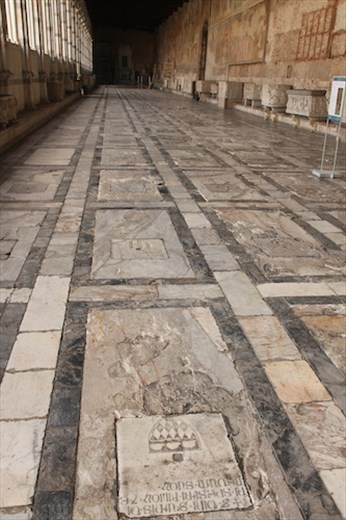
Tombs originally buried outside the Cathedral
The walls were covered by over 2600 square meters of frescoes—more than in the Sistine Chapel!—depicting stories from the Old Testament from Genesis to the Last Judgement.
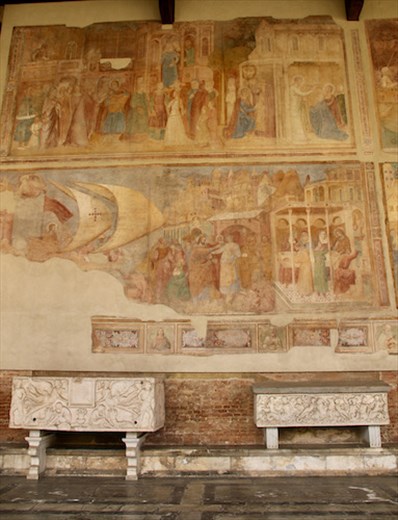
Two of 84 surviving Sarcophagi and restored Fresco
Campo Santo was reconstructed after being destroyed by an Allied bomb. Most of the sinopias were moved to the Sinopie Museum and recent fresco restoration project would make Buffalmacco proud.

Buffalmacco would be proud
The Opera del Duomo Museum houses many of the “original” sculptures and artifacts from the exterior of the Cathedral, including the bronze St. Rainerius Door, the actual lamp that inspired Galileo and the bronze Griffon that once sat atop the Cathedral where a replica now resides.

Original Bronze Doors
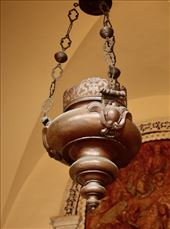
Galileo's swinging lamp
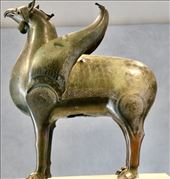
Bronze Griffon from Duomo
The vestments vessels, reliquaries and such don’t do much for me but the unique views of the Leaning Tower from the cloister were interesting.
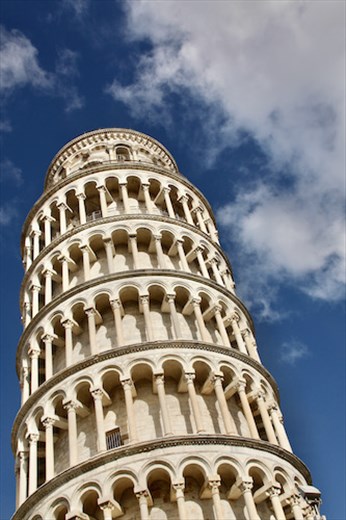
View from Cloister
On the opposite side of the Arno from the Field of Miracles is Tuttomondo, a mural done by Keith Haring, something Rick Steves included in his guidebook that could have been titled “And now for something completely different.” Haring can be credited—or accused—of starting the Graffiti Art movement. Just to show you we’re not snobs . . .
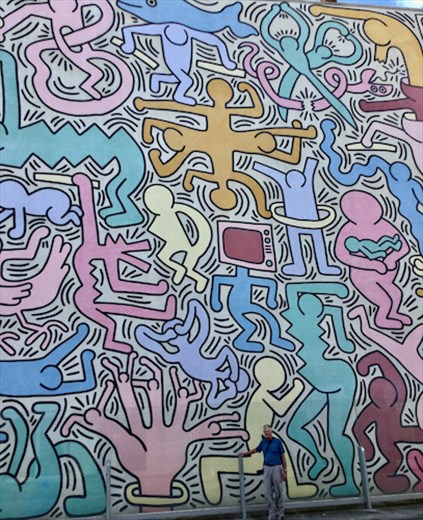
Tuttomondo and John
Our final stop along the Arno was at church of Santa Maria della Spina, St. Mary of the Thorn. Built in 1230 near the “New” Bridge (which collapsed in the 16th Century and was never rebuilt) the church was originally called Santa Maria di Pontenovo.
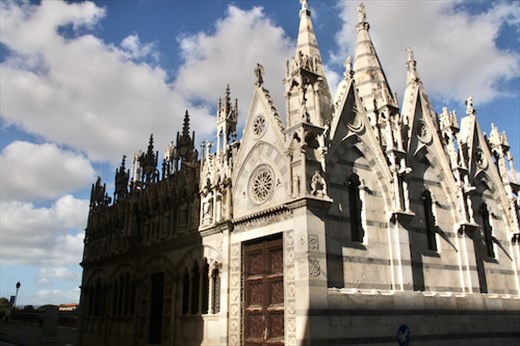
Well Spotted—Santa Maria della Spina
When we first noticed it from our side of the Arno we couldn’t have guessed that it is one of the most outstanding Gothic edifices in Europe although it was dismantled and rebuilt higher above the river in 1871 to protect it from water damage.